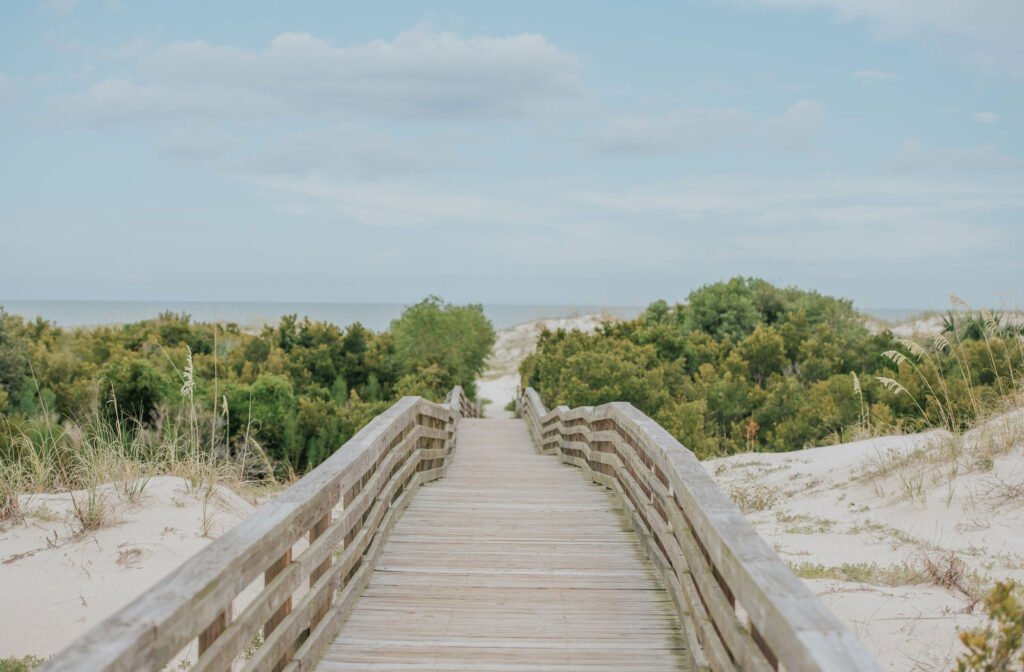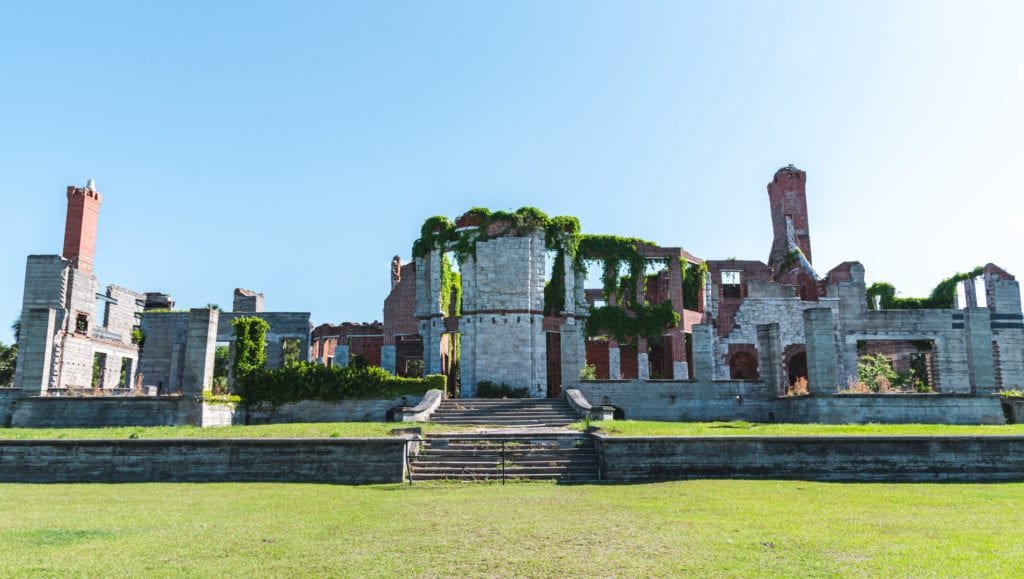Cumberland Island Georgia is one of America’s hidden treasures. Located off the southeastern coast of the state, this barrier island offers visitors a rare chance to experience unspoiled beaches, wild horses, historic ruins, and rich biodiversity. With no paved roads, limited access, and a deep connection to history and nature, Cumberland Island is truly a unique getaway.
In this article, we’ll explore what makes Cumberland Island Georgia so special. From its natural beauty and wildlife to its historical landmarks and travel tips, this guide will help you plan your next adventure to this magical island.
A Natural Paradise: What Makes Cumberland Island Unique
Cumberland Island is the largest and southernmost barrier island in Georgia, stretching about 17.5 miles long and up to 3 miles wide. Despite its size, it has remained largely untouched by commercial development.
The island is managed by the National Park Service as the Cumberland Island National Seashore, which preserves over 36,000 acres of land and maritime forest. Much of the island is wilderness, offering a rare escape from modern life.
Key Natural Features:
- Pristine beaches with white sand and zero crowds
- Maritime forests filled with ancient live oaks and Spanish moss
- Tidal marshes teeming with birdlife and aquatic species
- Dunes and freshwater lakes supporting a wide range of ecosystems
The natural diversity here supports over 300 bird species, manatees, sea turtles, alligators, and even feral horses that roam freely — a major draw for wildlife lovers.
The Famous Wild Horses of Cumberland Island
One of the most iconic sights on Cumberland Island Georgia is its wild horses. These untamed animals roam the beaches, fields, and forests freely, adding a mystical charm to the island.
Although no one knows exactly how they got there, it’s believed they may be descendants of Spanish horses brought by explorers in the 16th or 17th century. Unlike ponies on other islands, these are full-sized horses, and they are completely unmanaged — they survive on their own, without human care.
Note: Visitors are asked not to feed or approach the horses. They are wild animals and should be admired from a safe distance.
A Place Steeped in History
Cumberland Island isn’t just about natural beauty — it’s also rich in American history. Over the centuries, Native Americans, Spanish missionaries, British settlers, and wealthy industrialists have all left their mark here.
Historical Highlights:
- Dungeness Ruins: The remains of a grand 59-room mansion built by Thomas Carnegie, brother of Andrew Carnegie. The ruins are hauntingly beautiful and speak to a bygone era of luxury.
- Plum Orchard Mansion: A restored Gilded Age home also built by the Carnegie family. It’s open for ranger-led tours and showcases how the elite once lived.
- First African Baptist Church: Located in the north end at the Settlement, this modest church became famous after hosting the 1996 wedding of John F. Kennedy Jr. and Carolyn Bessette.
- Native American presence: Evidence of the Timucua people can still be found on the island through shell middens and ancient tools.
Things to Do on Cumberland Island Georgia

While the island remains largely undeveloped, there is no shortage of things to do for curious visitors and outdoor lovers.
Hiking and Camping
There are over 50 miles of hiking trails across dunes, forests, and marshes. You can hike to historical sites, scenic viewpoints, or even secluded beaches.
Popular Trails: Dungeness Trail, Southend Trail, Parallel Trail
Camping: Several campsites are available — both primitive and developed, including Sea Camp, Stafford Beach, and remote sites like Yankee Paradise.
Biking
You can bring your bike (for a small ferry fee) or rent one on the island. The sandy roads offer a fun and adventurous ride — just be ready for uneven paths.
Kayaking and Paddleboarding
Explore the marshes, rivers, and surrounding waters via kayak or paddleboard. You’ll spot wildlife and get a unique perspective of the island’s ecosystem.
Beachcombing and Bird Watching
Cumberland Island beaches are perfect for shell collecting and bird watching. Look out for:
- Loggerhead sea turtles (especially during nesting season from May to October)
- Ospreys, herons, and roseate spoonbills
- Dolphins and manatees near the coastline
How to Get to Cumberland Island
Cumberland Island is only accessible by ferry or private boat. Most visitors depart from St. Marys, Georgia, a small coastal town that serves as the gateway to the island.
Ferry Info:
- Operated by Cumberland Island Ferry Service
- Daily departures from St. Marys Visitor Center
- Round trip takes around 45 minutes
- Advance reservations recommended (especially in peak season)
There are no shops or cars on the island, so come prepared with:
- Food and water
- Sunscreen and bug spray
- Proper hiking shoes
- A backpack with essentials (trash must be packed out)
Lodging Options Near Cumberland Island Georgia
There’s only one hotel on the island — the luxurious Greyfield Inn, a former Carnegie estate turned into an upscale inn. It’s perfect for those seeking an all-inclusive experience with gourmet meals and guided tours.
Other accommodation options are available on the mainland in St. Marys, including:
- Local inns and B&Bs
- Budget motels
- Vacation rentals
Camping is the most common overnight option for those staying on the island itself.
Best Time to Visit Cumberland Island Georgia

Each season brings something different, but the best times to visit are spring (March to May) and fall (September to November).
Seasonal Tips:
- Spring: Pleasant weather, blooming flowers, active wildlife
- Summer: Very hot and humid; beware of mosquitoes and gnats
- Fall: Cooler temperatures and fewer bugs
- Winter: Peaceful and quiet but can be chilly
Avoid visiting during hurricane season (June–November), especially late summer, when storms are more likely.
Conservation and Responsible Travel
Cumberland Island Georgia is a protected area, so visitors are encouraged to follow Leave No Trace principles. That means:
- Do not litter
- Respect wildlife and historical sites
- Stay on marked trails
- Do not take anything from the island (shells, plants, etc.)
By being a responsible traveler, you help preserve this wild and beautiful place for future generations.
Quick Tips for Visiting Cumberland Island Georgia
- Book your ferry tickets early, especially on weekends and holidays
- Pack everything you need, including meals and plenty of water
- Wear comfortable walking shoes — you’ll be doing a lot of exploring
- Bring a hat, sunscreen, and insect repellent
- Check the weather forecast before your trip
- Respect the island’s rules and wildlife boundaries
- Consider staying overnight to fully experience the magic of the island
Final Thoughts: Why You Should Visit Cumberland Island Georgia
If you’re searching for a destination that combines natural beauty, rich history, and a true sense of escape, look no further than Cumberland Island Georgia. Whether you’re watching wild horses gallop across the dunes, exploring the mysterious ruins of Dungeness, or simply listening to the waves crash on a deserted beach, this island offers an experience unlike any other.
Do Follow USA Glory On Instagram
Read Next – Explore the Stunning Apostle Islands Sea Caves Today






